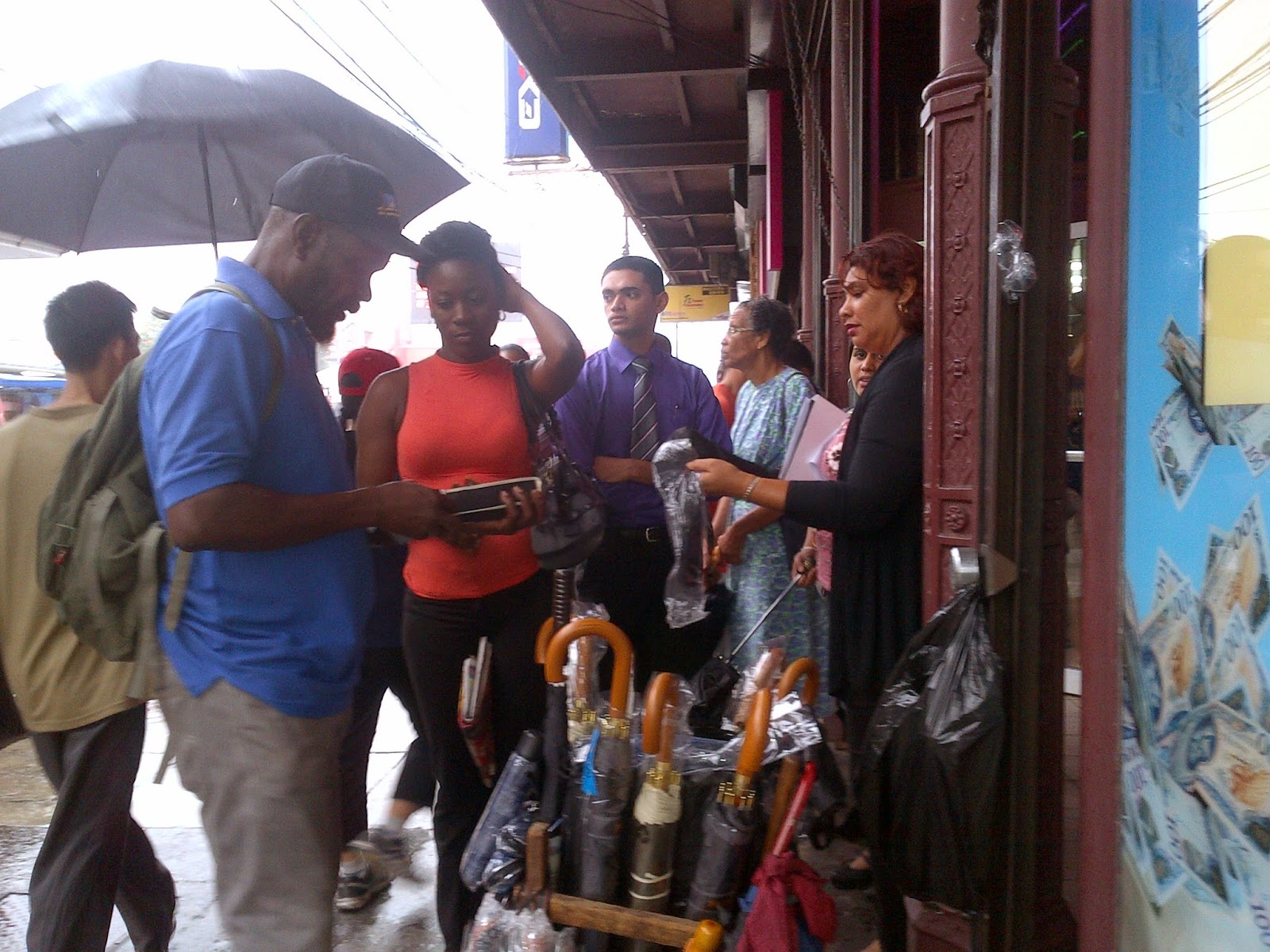The Chicago Area Transportation Study (1956) says that the conditions
of land use and density are the major determinants of the travel market. If demand
is constrained by these factors, it is unlikely that changes in supply will
have any great impact on the number of users.
Urban sprawl as evident as it is
today in Trinidad means that travelling is exacerbated by the needs tied to the
CBD of Port-of-Spain. Reliance on private and public transportation is
inevitable, thereby stimulating increases in the density of cars and buses
within the main town. Associate dean at Monash Art and Design and Age art
critic Robert Nelson (2010) rightly states
that ‘no public transport system can efficiently cope with low density...
public transport in large areas of low demand will always be structurally inefficient:
services are infrequent, unconnected and far apart.’
This by itself explains
the photo above. The numbers of PTSC buses, maxis and taxis accumulate within
the city as a means of transit to and from the outskirts. PTSC buses compact
the car parks and taxis line the streets awaiting passengers to leave the city.
Clusters of vehicles park in pockets designated for its functional mode of
transport. This then adds to the already congested condition of the city in terms of the number of vehicles with a rather efficient transportation network connecting places far away from
down town. Incentives to utilise private cars result from a lack in the public
transportation services,
but this is not the case of POS.
A wide array of means
of public transit is provided by the local government which enables easy travel
to and from, in an attempt to significantly reduce current congestion rates.
For further information on solutions to combat the issue of congestion in Port-of-Spain, please follow the links provided below:
ODPM advises to carpool into POS today
Solving Chronic Traffic Congestion
REFERENCES:
Nelson, Robert. 2010. Spreading ourselves too thin. The Age.









